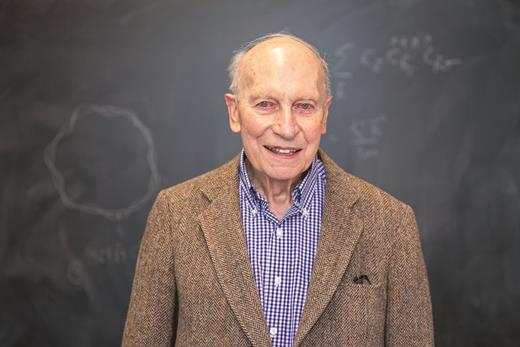Many of us may remember (perhaps not so fondly) the hours of work dedicated to learning physics in high school and college. While rheology and the physics of lasers play a key role in hematology, it is likely that few of us can recall how to calculate the speed of a ball rolling down a 45-degree plank or the correct formula to describe the actions of waves along a string.
Not so for Dr. Manfred Steiner. Despite a long and rewarding career as an academic hematologist, including training under Dr. William Dameshek, the 89-year-old always regretted that he had never done advanced work in physics. “I ended up being very successful in medicine,” Dr. Steiner said, “but there was always the dream of physics.” So, upon retirement, he went back to the classroom, and last September he earned his PhD from Brown University with a dissertation titled “Corrections to the Geometrical Interpretation of Bosonization.”
He spoke about his early career in a recent interview. “I finished medical school in Vienna, and after that, I came to the United States and was doing post-doctoral work in Washington, DC,” explained Dr. Steiner. “After I did my internal medicine training, I decided to go into hematology. I was interested in research and, hematology, I suspected, gave me the greatest chance to do that.”
Believing early on that he was better suited to basic science research than clinical care, Dr. Steiner got a PhD in hematology from Massachusetts Institute of Technology (MIT), and in 1968, he joined the faculty at Brown University. “I think that I loved biomedical research because it brought me closer to physics,” he explained, noting that really it is electrons, protons, and atoms that explain the physics of blood rheology or stem-cell dynamics, just as they explain the behavior of all matter. He was promoted to full professor in 1978. In 1985, Dr. Steiner was appointed head of the hematology section of the medical school at Brown University, a position he held until 1994.
As a hematologist, his lab studied platelet biology, in particular the behavior of platelet microtubulin and the properties of endothelial cells. Until his death, Dr. Dameshek remained a mentor. “I was very attached to him,” Dr. Steiner said.
It was upon retirement that he rekindled his desire to study physics and perhaps earn an additional degree. “I started to look around to see if I could fulfill my longstanding dream of becoming a physicist.” Initially, he did classwork at MIT before transferring to Brown, where he began his research into condensed matter physics.
When asked what the study of physics has that was missing from biomedical research, Dr. Steiner emphasized the scale and the precision of the work. “In physics, they are fighting about the sixth or seventh decimal point. This precision fascinated me. That's what drove me, always — to be more precise,” he stated.
So, what advice does the octogenarian have for others who may be considering a transition in professions. “People write me letters. They are tired of doing what they do, and they always wanted to do something else. A lady asked me if at the age of 57, she should start writing a novel. I said sure, follow your dream. As you get older, you will ask yourself, my God, why did I not do that? Why did I pass up that opportunity?”
For his next act, Dr. Steiner intends to work with his advisor to publish and expand on the principles of his dissertation.

